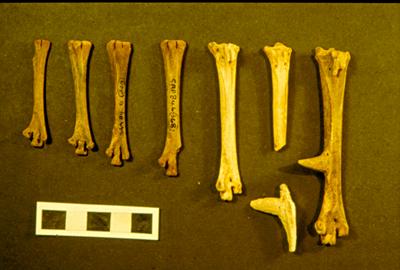
Tarsometatarsi of chickens from 11th century levels at St Albans Abbey. Courtesy of Southampton University
Apparently worthless archaeological finds such as bone and pottery fragments can tell us a surprising amount about the past, such as information about people’s diets, the crops grown in a region, and trade routes. A project undertaken by a team from Southampton University to compare the status of the abbeys at St Albans and Eynsham using excavated food remains illustrates this well.
Finds processing
Careful finds processing is an essential precursor to research, and Society members have helped with post-excavation processing in the past. If you are interested in helping with this, please contact archaeology@stalbanshistory.org, and we will see if this can be organised.
How metal detecting has transformed archaeology
Many recent archaeological finds stem from the popularity of metal detecting. Analysis of the pattern of these finds has shed new light on trade routes, previously-unknown settlements, and the co-location of populations from different cultures.
Finds Liaison Officers have been appointed for each area to facilitate the reporting and documenting of important finds. A recent article by the Finds Liaison Officer for Hertfordshire explains more.